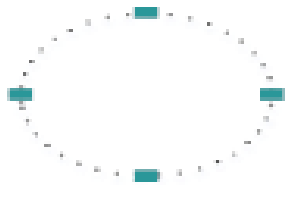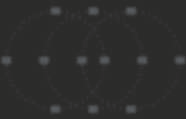Consider a system that integrates positioning and single-user millimeter wave (mmWave) communication, where the communication part adopts wavelength division multiplexing (WDM) and orbital angular momentum (OAM). This paper addresses the power allocation and high dimensional constellation design in short-range line-of-sight (LOS) environment, where the communication links are relatively stable. We propose a map-assisted method to replace online estimation, feedback and computation with the look-up table searching. We explore the possibility of using a few patterns in the maps, and investigate the performance loss of using the optimal solution of one position for other positions. For power allocation, we first characterize the performance loss outside the OAM beam regions, where we only use plane waves, and figure out that the loss is always small. However, in OAM beam regions, the performance loss has similar characteristics only at some specific positions. Combining with numerical results, we illustrate that a few patterns can be adopted for all receiver locations in the map. We also investigate the high dimensional constellation design and prove that the positions where the channel matrices are sufficiently close to be proportional can employ a fixed constellation. Then, we figure out that the constellation design for all receiver locations can be represented by a few constellation sets.
翻译:考虑一个将定位和单一用户毫米波(mmWave)通信(mmWave)整合在一起的系统,在该系统中,通信部分采用波长分多重和轨道角动力(OAM),本文论述短距离光线环境中的功率分配和高维星座设计,通信联系相对稳定。我们提出了一个地图辅助方法,以替换在线估计、反馈和计算与搜索表的搜索。我们探索在地图中使用几个模式的可能性,并调查使用一个位置的最佳解决方案来填补其他位置的性能损失。关于功率分配,我们首先描述在OAM波段区域外的性能损失,我们只使用飞机波,并查明损失总是很小。然而,在OAM光线区域,性能损失的特性仅在某些特定位置类似。我们用数字结果来说明,所有接收图位置都可以采用几种模式。我们还调查高维星座的设计,并证明频道矩阵位置足够接近其他位置的最佳解决方案。关于频道矩阵的位置,能够使用一个固定的星座,然后我们绘制一个固定的星座。

























































































